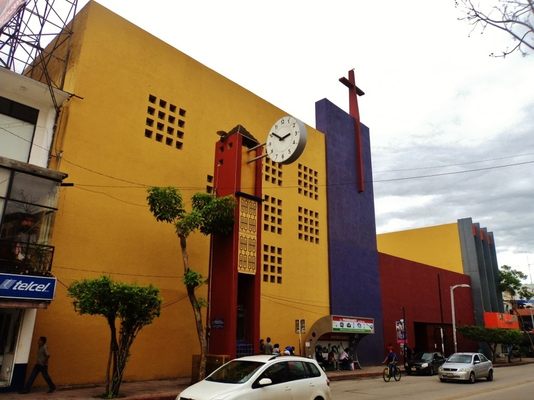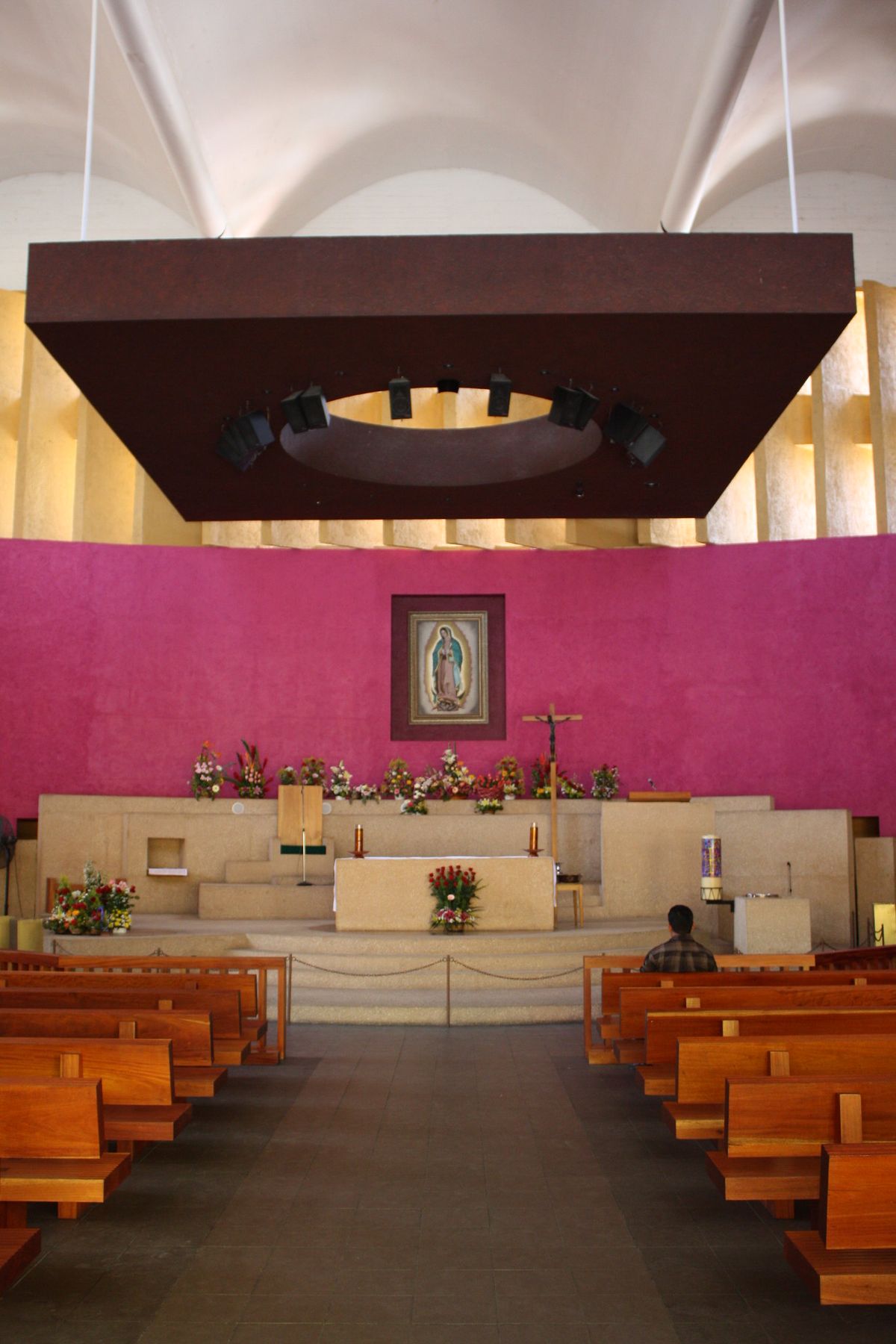About
Built in the late 1950s, this unique church is representative of what was then one of the most modern architectural styles in Mexico. Originating in Guadalajara, the Tapatía school is defined by the work of architects from this city, including the legendary contemporary architect Luis Barragán.
When Barragán returned to Guadalajara in the late 1920s following a series of trips to Europe, he had become infatuated with the modernist, geometric architecture that was starting to cause waves in the Old Continent, exemplified by works from the likes of Le Corbusier. Having brought back several books defining this current, Barragán shared them with his group of Guadalajara architects (including Pedro Castellanos, Ignacio Díaz Morales and Rafael Urzúa), and together they adapted it to Mexican culture.
One particular aspect they emphasized was the use of shapes symbolic of the country's pre-Hispanic cultures to complement the original geometry, as well as the popular presence of bright colors (especially the shade recognized as "Mexican pink"). One of the earliest examples of the Tapatía school is the ITESO Clavigero House in Guadalajara, while the Parish of Our Lady of Guadalupe in Tuxtla Gutiérrez is representative of its mid-century modifications.
Most of the movement's early works consisted almost exclusively of concrete and cement, materials that were embraced for their relative novelty and versatility. A few decades later, with growing concerns about the sustainability in architecture, wood became more commonplace. This can be seen in the church's niches as well as in the 1948 Casa Luis Barragán, a UNESCO World Heritage Site in Mexico City.
Owing to Tuxtla Gutiérrez's tropical climate, the parish's use as a place of worship, and a tendency towards minimalism, this building is also more spacious than previous examples of the Tapatía school. With the ochre patio that includes a large square feature, Mexican pink main altar, and purple walls with square cutouts, the geometry and use of color of the Parish are all representative of this iconically local type of architecture. Unfortunately, the name of the architect or architects responsible for this notable church have yet to be publicly disclosed.
Related Tags
Yucatan: Astronomy, Pyramids & Mayan Legends
Mayan legends, ancient craters, lost cities, and stunning constellations.
Book NowCommunity Contributors
Added By
Published
September 27, 2019

































